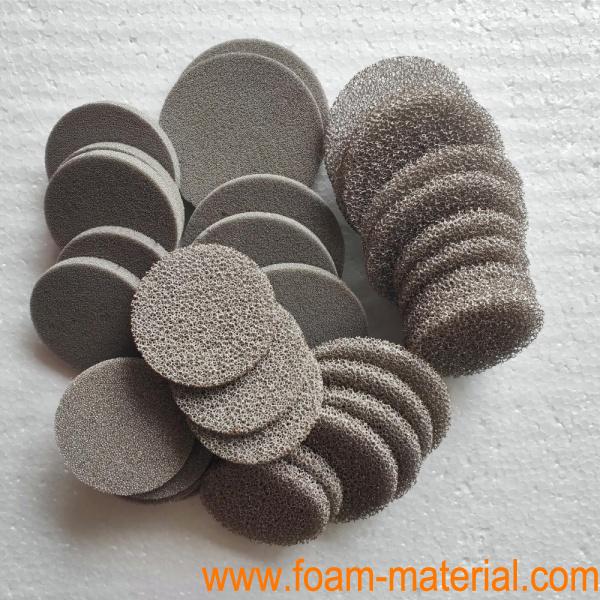Nickel Foam Batteries: A Revolution in Energy Storage Technology
As the demand for advanced energy storage solutions continues to rise, the quest for more efficient, durable, and high-performance batteries has led to the development of innovative technologies. One such breakthrough is the nickel foam battery, a promising new entrant in the world of energy storage. This blog explores what nickel foam batteries are, their key features, and their potential applications.
●What is a Nickel Foam Battery?
A nickel foam battery is a type of battery that uses nickel foam as a key component in its electrode structure. Nickel foam is a porous, three-dimensional material made from nickel, characterized by its high surface area and conductivity. This material is used to create electrodes that offer significant advantages over traditional battery designs. Nickel foam batteries can be categorized into different types based on their chemistry, such as nickel-metal hydride (NiMH) batteries and nickel-zinc (NiZn) batteries.
●Key Features of Nickel Foam Batteries
1.High Surface Area: Nickel foam's porous structure provides a large surface area for electrochemical reactions. This feature enhances the battery's overall performance by increasing the active sites where charge transfer occurs.
2.Enhanced Conductivity: Nickel foam has excellent electrical conductivity, which helps in reducing internal resistance within the battery. This results in improved charge and discharge rates compared to conventional battery materials.
3.Lightweight and Durable: Nickel foam is relatively lightweight, which contributes to the overall reduction in battery weight. Its durability ensures long-term reliability and resistance to mechanical stress, making it suitable for demanding applications.
4.Flexibility and Customization: The porous nature of nickel foam allows for flexibility in battery design. Manufacturers can customize the thickness, density, and surface area of the foam to meet specific performance requirements.
5.Environmental Benefits: Nickel foam batteries are often seen as environmentally friendly options due to their potential for recycling and the use of less harmful materials compared to some other battery technologies.
●Applications of Nickel Foam Batteries
1.Electric Vehicles (EVs)
Nickel foam batteries have the potential to play a significant role in the electric vehicle market. Their high surface area and conductivity can lead to improved energy density and faster charging times, addressing some of the limitations associated with traditional EV batteries. The durability of nickel foam also contributes to the longevity and reliability of batteries in harsh driving conditions.
2.Renewable Energy Storage
In renewable energy systems, such as solar and wind power, efficient energy storage is crucial for balancing supply and demand. Nickel foam batteries, with their high energy density and rapid charge/discharge capabilities, offer an attractive solution for storing energy generated from renewable sources. Their ability to handle frequent charge cycles makes them suitable for grid energy storage applications.
3.Consumer Electronics
For consumer electronics, nickel foam batteries can provide high performance and compact designs. Devices such as smartphones, laptops, and wearables benefit from the lightweight and flexible nature of nickel foam batteries, enabling longer battery life and faster charging while maintaining slim profiles.
4.Medical Devices
In the medical field, reliable and long-lasting power sources are essential for devices like hearing aids, pacemakers, and portable medical equipment. Nickel foam batteries offer a stable and durable solution, with the added benefit of customizable design to meet specific medical device requirements.
5.Industrial Applications
Nickel foam batteries are also applicable in various industrial settings where robust and reliable energy storage solutions are required. They can be used in backup power systems, remote sensors, and other industrial equipment that demands high performance and resilience.
●Advantages Over Traditional Battery Technologies
1.Improved Energy Density: The high surface area of nickel foam allows for greater energy storage capacity compared to traditional batteries, potentially leading to longer operational times and reduced frequency of recharging.
2.Faster Charge/Discharge Rates: The enhanced conductivity and large surface area facilitate quicker charge and discharge cycles, improving overall efficiency and performance.
3.Enhanced Durability: Nickel foam's durability makes it less susceptible to wear and tear, contributing to a longer lifespan and reduced need for replacement.
4.Customization: The ability to tailor the foam's properties allows for the optimization of battery performance based on specific application needs, offering a level of flexibility that traditional batteries may not provide.
●Challenges and Future Directions
While nickel foam batteries offer numerous advantages, there are still challenges to address. These include optimizing manufacturing processes, managing cost-effectiveness, and ensuring long-term stability and performance under various conditions. Research and development efforts are ongoing to overcome these challenges and further enhance the capabilities of nickel foam batteries.
The future of nickel foam batteries looks promising as advancements in materials science and battery technology continue to evolve. With ongoing research and innovation, nickel foam batteries may become a mainstream solution for a wide range of applications, driving progress in energy storage and management.
●Conclusion
Nickel foam batteries represent an exciting development in the field of energy storage, offering enhanced performance, flexibility, and environmental benefits. From electric vehicles and renewable energy systems to consumer electronics and medical devices, their potential applications are vast and varied. As technology advances and challenges are addressed, nickel foam batteries are poised to make a significant impact on the future of energy storage.

